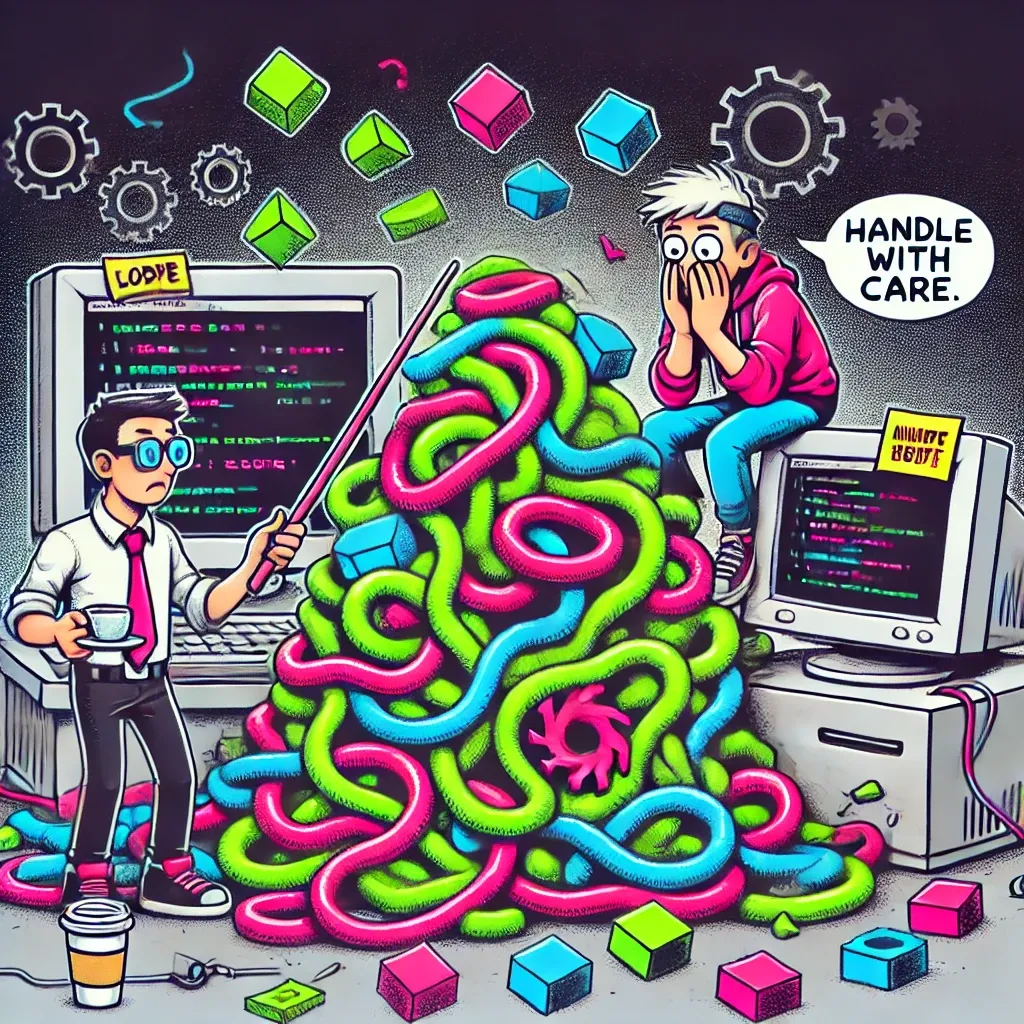How to Approach Legacy Code Issues
Dealing with legacy code is inevitable as a software engineer. Here's our step by step approach.

Ah, legacy code. It's the software development equivalent of an attic full of dusty boxes. You know you need to dig through it eventually, but you also know there might be spiders. For software engineers, dealing with legacy code is an unavoidable task that requires strategy, patience, and humor. Let’s talk about the tangled web of legacy code and explore how to navigate it without getting stuck.
🔑 Key Takeaways 🔑
- Legacy code is prevalent: 70% of codebases fall under this category.
- Technical debt and code rot are common issues: They complicate maintenance and innovation.
- Documentation is often lacking: This makes understanding the code a challenge.
- Systematic approach is vital: Refactoring requires planning and testing.
- Communication and documentation are key: These ensure smooth transitions and updates.
Understanding Legacy Code
You've inherited a codebase that's older than your intern and more mysterious than the plot of "Inception." Welcome to the world of legacy code, where 40% of developers spend more than half their time wrestling with outdated code, technical debt, and scarce documentation. Buckle up, because you're about to become a code archaeologist.
A Step-by-Step Guide to Legacy Code
1. Assess the Codebase:
Think of this as a reconnaissance mission. Evaluate the complexity, maintainability, and the lurking technical debt. Identify and prioritize problems.
2. Identify Key Areas for Improvement:
No need to tackle everything. Focus on areas that need attention, like performance issues, security vulnerabilities, or recurring bugs.
3. Develop a Refactoring Plan:
Create a plan for refactoring: decide the order of tasks, tools needed, and resources required. A well-laid plan keeps chaos at bay.
4. Establish a Testing Framework:
Develop a testing framework to ensure that changes won’t destabilize the codebase. Testing helps prevent turning your codebase into a risky structure.
5. Communicate with Stakeholders:
Keep everyone informed—from developers to stakeholders. Transparency helps manage expectations and reduces panic when changes go live.
6. Monitor Progress and Adjust:
Monitor the refactoring process and adjust the plan as needed. This is an iterative journey, not a straight line.

Best Practices
- Start with Small Changes: Tackle smaller tasks first to build momentum and minimize risk.
- Tools and Services: Use tools like SonarQube or CodeClimate to help identify areas for small, incremental improvements.
- Use Automated Tools: Code analyzers and refactoring tools help streamline the process and catch issues early.
- Tools and Services: Consider using tools like ReSharper, Visual Studio Code Analysis, and ESLint to assist in finding and fixing code issues automatically.
- Collaborate with Other Developers: Share knowledge to make the process smoother. Learn more about collaborative problem-solving.
- Document Changes: Document everything. This makes future maintenance easier for you and your colleagues.
- Tools and Services: Use tools like Confluence or Notion for documentation. Version control documentation changes using Git.
- Continuously Review and Refactor: Legacy code isn’t a one-time project. Keep reviewing and refactoring to avoid future issues.
- Tools and Services: Set up continuous integration and continuous deployment (CI/CD) with tools like Jenkins, CircleCI, or GitHub Actions to ensure regular reviews and refactoring.
Conclusion: Transforming Legacy Code
Approaching legacy code is less about slaying a beast and more about taming it. With a strategic plan and adherence to best practices, you can transform a chaotic codebase into something maintainable. Put on your brave face, grab your tools, and start clearing the path through legacy code. Your future self—and your team—will thank you.




